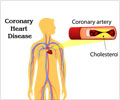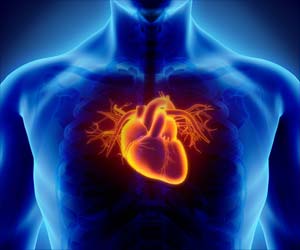A new study reveals a new algorithm makes use of high-sensitivity cardiac troponin T (hs-cTnT) values to rule-in or rule-out the possibility of myocardial infarction.

Tobias Reichlin, M.D., of University Hospital Basel, Switzerland, and colleagues sought to develop and validate an algorithm to rapidly rule-in or rule-out an AMI. The prospective multicenter study enrolled 872 patients with acute chest pain presenting to the emergency department and AMI was the final diagnosis in 147 patients (17 percent). The algorithm incorporated hs-cTnT baseline values and absolute changes within the first hour.
The algorithm was developed in a sample of 436 patients and validated in the remaining 436 patients. Applying the algorithm to the validation cohort, 259 patients (60 percent) could be classified as rule-out, 76 patients (17 percent) as rule-in and 101 patients (23 percent) as being in the observational zone within one hour. Cumulative 30-day survival was 99.8 percent, 98.6 percent and 95.3 percent in patients classified as rule-out, observational zone and rule-in, respectively, according to the study results.
"The use of this algorithm seems to be safe, significantly shortens the time needed for rule-out and rule-in of AMI, and may obviate the need for prolonged monitoring and serial blood sampling in 3 of 4 patients with chest pain," the authors conclude.
(Arch Intern Med. Published online August 13, 2012. doi:10.1001/archinternmed.2012.3698. Available pre-embargo to the media at http://media.jamanetwork.com.)
Editor's Note: Authors disclosed financial support. The study was supported by research grants from the Swiss National Science Foundation, the Swiss Heart Foundation, Abbott, Roche, Siemens and the Department of Internal Medicine, University Hospital Basel. The high-sensitivity cardiac troponin T assay was donated by Roche. Please see the article for additional information, including other authors, author contributions and affiliations, financial disclosures, funding and support, etc.
Advertisement
In a commentary, L. Kristin Newby, M.D., M.H.S., of Duke University Medical Center, Durham, N.C., writes: "With increasing ED [emergency department] overcrowding, more effective tools are needed to enable rapid triage of patients with possible MI [acute myocardial infarction]."
Advertisement
"Finally, although touted as 'simple' by the authors, the need for multicomponent algorithms that are different for rule-in and rule-out and that vary by age group or other parameters will challenge application by busy clinicians unlikely to remember or accurately process the proposed algorithm. As such, it will imperative that hsTn algorithms, if validated, are built into clinical decision support layered onto electronic health records so that testing results are provided electronically to physicians along with the algorithmic interpretation to allow systematic application in triage and treatment," Newby concludes.
(Arch Intern Med. Published online August 13, 2012. doi:10.1001/archinternmed.2012.1808. Available pre-embargo to the media at http://media.jamanetwork.com.)
Editor's Note: Newby made financial disclosures and listed research grants or contracts from a variety of companies. Please see the article for additional information, including other authors, author contributions and affiliations, financial disclosures, funding and support, etc.
Source-Eurekalert














